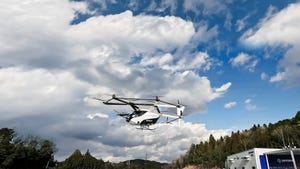Stellantis, BlackBerry, AWS Create New Virtual Cockpit for CarsStellantis, BlackBerry, AWS Create New Virtual Cockpit for Cars
The manufacturer has several familiar brands in its stable including Chrysler, Jeep, Dodge, Ram, Peugeot, Fiat and Maserati

Auto manufacturer Stellantis has introduced a groundbreaking new “virtual cockpit” platform that it says will dramatically reduce the development time of infotainment systems for its cars.
The tech has been produced in tandem with BlackBerry QNX and Amazon Web Services (AWS) and has the potential to make a major impact on the automotive world, given the sheer size of Stellantis’ portfolio.
The conglomerate was the third-largest auto manufacturing group globally by sales in 2023 and has many familiar brands in its stable including Chrysler, Jeep, Dodge and Ram in the U.S., as well as big European names such as Peugeot, Citroen, Fiat, Maserati and Opel.
The new tech will enable the company and its brands to create realistic virtual versions of their vehicles’ controls and systems. These virtual cockpits will behave exactly as they would in real cars, but with no need to change the core software that runs them.
By adding the cockpit to its Virtual Engineering Workbench, Stellantis claims that processes that previously took months can now be completed in as little as 24 hours in some instances, enabling the delivery of infotainment tech to consumers up to 100 times faster.
The breakthrough is enabled by BlackBerry’s QNX Hypervisor in the cloud, which is on early access release on AWS.
Graphics, audio and touchscreen or keyboard inputs can all be virtualized, meaning there is no advantage in running the QNX Hypervisor systems on real hardware. By using them in the cloud, customer feedback sessions can be accelerated, and changes made in real time.
Stellantis is currently pushing ahead with three major software-driven programs – STLA Brain, STLA SmartCockpit and STLA AutoDrive – and chief software officer Yves Bonnefont acknowledged that it is becoming increasingly important to innovate in how software is developed and validated.
Bonnefont said: “With our virtual cockpit, we’re revolutionizing not just our approach, but also that of our suppliers and partners in the industry. Essentially, we’re able to get closer to our customer’s needs through this technology with faster development cycles, faster feedback loops, and quicker delivery of the technology they use and love.”
The need for swifter innovation in the automotive arena among legacy manufacturers is becoming increasingly apparent, given the breakneck pace being set by the swathes of new electric and intelligent vehicle brands arriving on the market in China.
Although Stellantis is not attending CES, the news has been released to coincide with the event, and BlackBerry is running demonstrations of its QNX tech at the show.
Read more about:
CES 2024About the Author
You May Also Like








